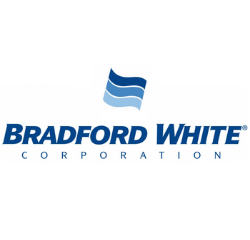
By Bradford White Corporation
On July 4, 2025, President Donald Trump signed the One Big Beautiful Bill Act (OBBBA) into law. The 870-page bill covers a broad swath of policy initiatives for the current administration from reevaluating federal entitlement programs to workforce development and tax relief. However, as it relates to the HVAC and water heater industries, some of the more interesting developments come with OBBBA’s elimination of energy efficiency tax credits that were revamped by the Inflation Reduction Act (IRA) when President Joe Biden signed that bill into law nearly three years ago.
In its own right, the IRA was 274 pages long and contained changes and had a wide lens when addressing various policy topics. This included the revamping of 25C tax credits and 179D tax credits, named for the section of the federal tax code where these credits can be found. We have discussed the 25C tax credits in previous columns. Here, homeowners that purchase and install a qualified energy efficient appliance, in their primary residence, were eligible for a federal income tax credit of 30% of their out-of-pocket costs, up to a limit $600 (or a $2,000 limit if the product utilized heat pump technology). In this case, a “qualified product” was one which met the highest tier of the Consortium for Energy Efficiency’s product specifications, that were not the advanced tier. Under the IRA, this tax credit would sunset at the end of 2032. However, OBBBA now eliminates the tax credit at the end of 2025.
The IRA also revamped 179D individual income tax credits that were often utilized by small businesses. In this case, the law contained a complex formula for building owners that allowed tax credits for improved building energy efficiency. More specifically, building owners would receive 50 cents per square foot of building space when building energy efficiency improvements resulted in a 25% increase to the building’s energy efficiency relative to the building’s energy use prior to the improvements. The bill also included stipulations for the 50-cent amount to quintuple under certain circumstances. Under the IRA, these credits were set to sunset at the end of 2033.
However, the OBBBA will eliminate these credits much sooner. After being spared elimination in the House-passed version of the bill, the U.S. Senate voted 51-50 (with Vice President JD Vance voting yes) to pass their version of the bill which eliminated the 179D credits on June 30, 2026. The House would eventually concur with the Senate’s recommendation before sending the bill to be signed into law by the President.
As for the impacts of these actions on industry, that varies and is dependent upon how much you or your organization relied on these credits. Those that had business plans that absorbed these tax credits as a strategy will obviously need to reprioritize moving forward. On the other hand, those who were not relying heavily on these policies moving forward will likely feel little, if any effect moving into 2026 when these credits expire.
No matter what your situation might be as it relates to this legislation, and these tax credits specifically, BWC Government and Regulatory Affairs staff stands ready to provide you with the latest information, and answer any questions you may have about federal, state, or local policies, and policy proposals, that may impact your business and our industry as a whole. Also, if you are aware of significant government activity in your area that will have an impact on our industry, our team would like to know about it. Please reach out to our Government and Regulatory Affairs team directly at BWCGovReg@bradfordwhite.com.
